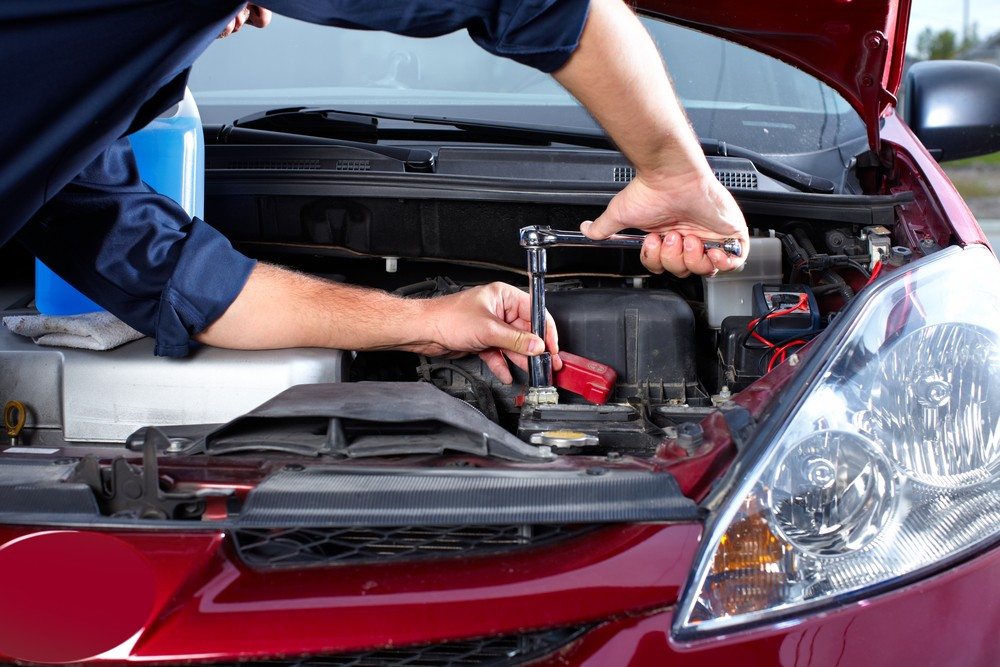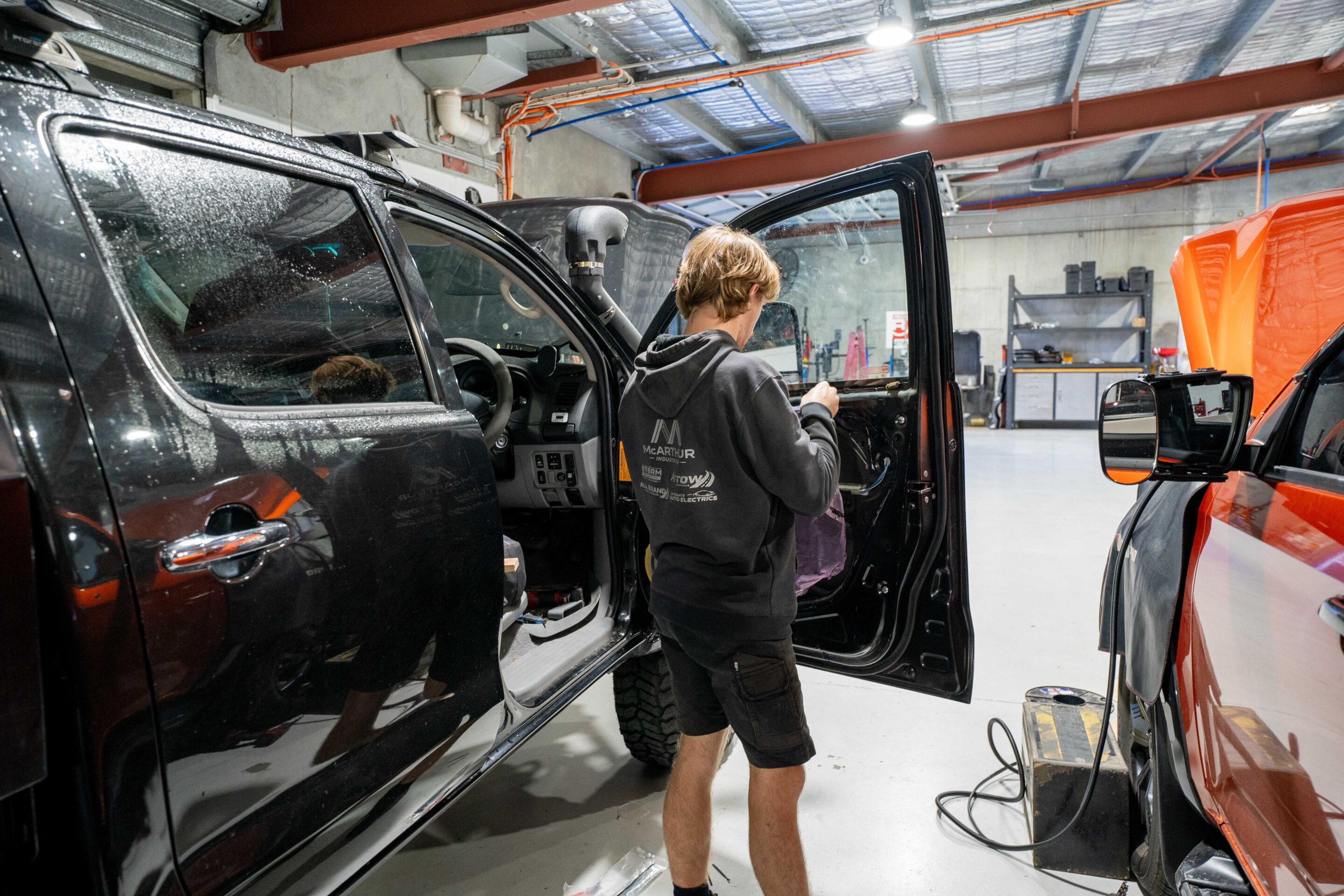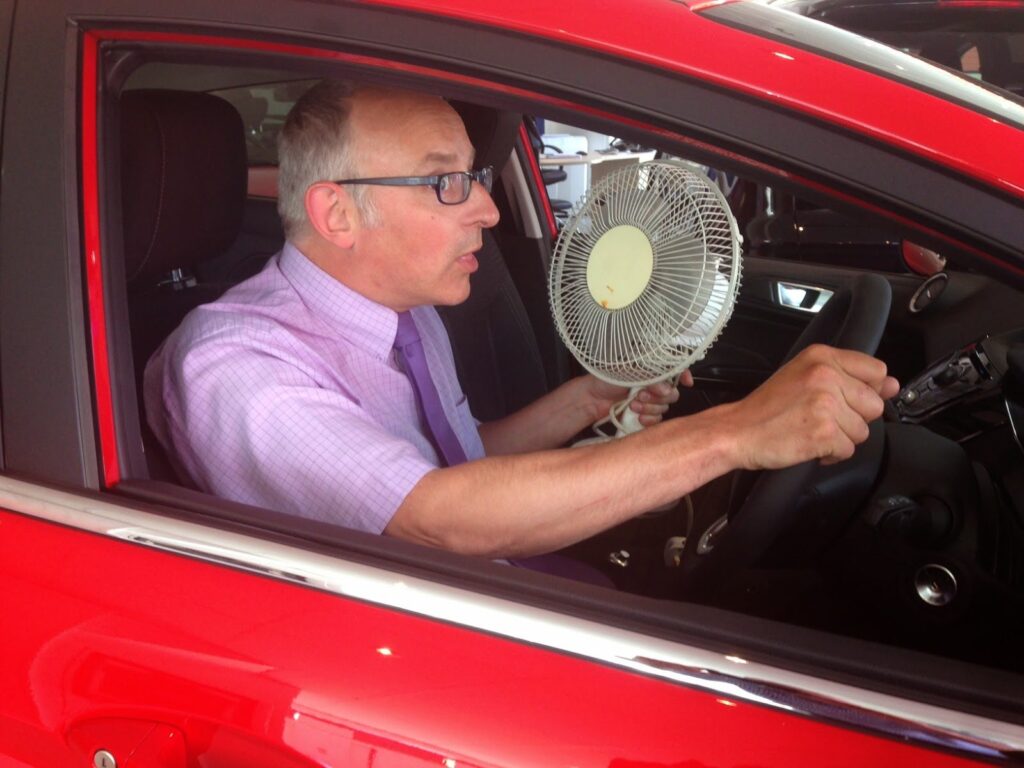Air conditioning system that doesn’t blow cold air is more than just an inconvenience—it’s a serious issue, especially in Australia’s scorching summer heat. In cities like Brisbane, where summer temperatures regularly hit 32°C or higher, driving without a functioning car A/C isn’t just uncomfortable, it’s unbearable. Whether you’re commuting, road-tripping, or running errands, a reliable air conditioning system is essential for a safe and pleasant journey.
You might notice weird noises in your car, it might have taken a while for you to realise that it only happens when the A/C is turned on, but now you’re getting closer to the problem.
Fixing your air conditioning may just take a simple tweak, but unless you really know what you are looking at it can be quite complex.
If you’re unsure how your car’s air conditioning system works, your best move is to take it to a qualified auto electrician. However, if you’re confident in your DIY skills, keep reading—this guide will walk you
Repairing a car’s air conditioning system doesn’t always work. WHAT? What do you mean? Well, there’s a couple of facts that you need to know:
- Repairing means that something is broken and has to be tinkered, fixed, or replaced.
- While most of the time, the problem lies in the fact that it’s running out of refrigerant or low car battery.
- The so-called repairing is actually refilling the liquid or recharging your battery.
Now here’s the thing: while the tasks performed by a professional car air conditioning system services may look simple, they actually require specialized equipment. For instance, refilling the A/C refrigerant typically involves using a large pressurized tank and a long hose with an integrated pressure gauge—tools you likely won’t have lying around at home.
- A can or two of refrigerant/Freon
- A refrigerant dispenser (made of a pressure guage and trigger.)
Lucky for you, we also have a short guide here to help you refill refrigerant/Freon into your car’s A/C.
Refilling refrigerant step-by-step
1. Item procurement and precautionary measures
The first step is to get all the necessary equipment and understand the safety measures you should know when working on your car’s air conditioning system. Understand that failure to heed to the safety measures may result in injuries such as frostbites and blindness.
Things you should have:
- Gloves and goggles
- A can or two of refrigerant/Freon
- You can use either a single pressure hose or a manifold gauge set with three hoses which is more advanced and allows for a more accurate check of your air conditioning system before refilling. Alternatively, a basic refrigerant dispenser, as mentioned earlier, can also get the job done for most DIY tasks.



Other things to note:
- Wear goggles to protect your eyes.
- Always wear gloves and long sleeves when working on your air conditioning system to protect yourself from accidental refrigerant spray. If refrigerant comes into contact with your skin, it can instantly freeze the area and cause painful frostbite injuries.
- Analyse and know which part of the car you need to touch and should not touch! Check below for more information.
- Know the kind of refrigerant your car operates on. Not all cars use Freon, although that is typically what most use. You can find the tag around the radiator or the cover howls. Do this before buying the refrigerant. Different cars make use of different refrigerants and this is based on the year of manufacture. If the date of manufacture of the car is before 1994, then your care uses R12 or R22 refrigerants . However, if it was manufactured after 1994, then check the engine bay for a sticker that says if r134 is supported by the air conditioning system.
- If it doesn’t operate of r134, then this isn’t the right guide for you and you obviously should not try refilling R22 or R12 the same way.
Things you should not touch:
- Do not touch anything you are unfamiliar with.
- Try as much as possible not to touch the engine bay which includes the hoses.
Things you will need to touch:
- Fill port: this is located on the left hand side of the engine bay. It is shaped like a pipe with two hoses coming out of its end.
Check the A/C:
Tell us, is the air conditioner completely knocked out or is it still blowing fairly cold wind? If the air conditioner system is completely out, you will need about two cans of refrigerant. If it is still blowing soft, cold wind, one can is sufficient.
2. Turn off the engine
Make sure it’s off for a couple of hours before you try looking for the hoses of the fill port.
3. Connect the hose
Twist the can as you attach the hose, but don’t lock the pin just yet. Now, locate the low-pressure port of your air conditioning system it should have an “L” printed on the cap. Remove the cap carefully and keep it somewhere safe. Then, connect the other end of the hose to the low port, ensuring it’s secure and leak-free.

4. Let out air
oosen the end of the can to let any air out from the air conditioning system. The larger the noise, the more refrigerant you have left inside. Unleash it for only one or two seconds, and tighten it back.
Now, turn the pin on the can clockwise and let it pierce through the can. Nothing is going to happen, yet.
5. Turn on the car
Turn on the engine after you’ve done the steps above. Turn on the A/C and turn it to its highest setting. Also turn it to its coldest setting.
6. Start recharging the refrigerant
Now, go back to the can and turn the pin in the opposite direction from Step 5 to release it, allowing refrigerant to flow into the air conditioning system. Keep an eye on the pressure gauge it should steadily rise and settle within the blue zone, indicating a proper and safe fill level.
Don’t shake the can vigorously, but move it around to let the refrigerant flow into the A/C system.

7. Remove the hose
Once all the refrigerant has been dispensed, turn off the engine and lock the pin on the hose. Be sure to turn it fully and confirm it’s securely locked. Then, carefully remove the hose from the air conditioning system and replace the “L” cap on the low-pressure port to seal it properly.
8. Enjoy the A/C!
And there’s the quick guide to recharging the R12 into your system. It’s pretty simple and safe if you follow the procedures accordingly and make sure that you wear safety equipment.
Now, what if there’s a leak? The good news is that many modern refrigerants designed for your air conditioning system come mixed with UV dye. This makes it much easier to detect leaks around hoses and fittings. Simply use a UV light to inspect the system—any leaks will glow under the light, allowing you to pinpoint the exact location for repair.
Sometimes, the refrigerant may not be the problem it might just be the fan. You can try replacing it yourself, but it does require you to open up the dashboard, the filters and lots more. So, the better way to do this is to call us at Sandgate Auto Electrics at (07) 3269 3158 or drop by at our autoshop on 113 Connaught Street Sandgate, QLD, 4017 . We provide the fastest, most reliable air conditioning system car services for cars across Queensland. We also take the proper measures and truly fix everything about your A/C to make sure that there will be no problem for at least a few years to come.

